Earthshine and Other Joys
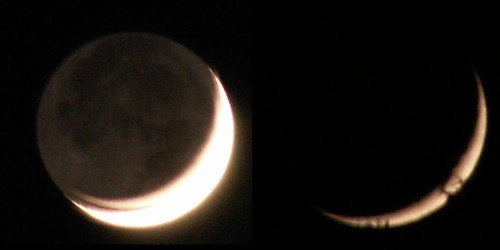
Back in the September predawn I gazed on a moon decreasing toward New and wished I'd had a tripod ("Waiting for Light"). Last night I saw a small, waxing crescent dipping toward the trees and jumped at the chance to catch it....
I took these left and right photos of last night's 2-day-old moon at 6:40 and 6:43 PM (Eastern Standard Time), respectively. The longer exposure on the left reveals the phenomenon of earthshine, visible with the naked eye during thin crescent phases.
In earthshine, the moon reflects light from two different sources. The thin crescent -- very much overexposed on the left -- is light reflected from the sun. But the larger, dimmer illumination, in which one can see some hint of the mares ("seas"), is reflected from the Earth, which itself is reflecting sunlight onto the moon. Hence the term "earthshine". That dimmer illuminated part of the moon is doubly-reflected light.
Albedo is the term given to this reflectivity. The moon has an albedo of approx. 0.12, about the same as that for soil; it reflects only 12 percent of the sunlight that strikes it. Compare this with the albedo of snow (0.75) and the average albedo of the planet Earth (0.30). (Sources: NASA's Earth Observatory and "Our Mysterious, Majestic Moon," in the 2005 Old Farmer's Almanac.)
Says the University of Maryland Department of Astronomy, "Each time light reflects off a surface (like a planet), it gets dimmer because some of the light is absorbed by the reflecting surface. This means that earthshine is dimmer than moonlight because earthshine is sunlight that has been reflected twice and moonlight is sunlight that has been reflected only once (off the surface of the moon). In addition, the reflectivity of the moon (its 'albedo') is less than that of the Earth, which makes earthshine even dimmer. The moonlight of a full moon, for example, is so bright that, even if it were positioned correctly to reflect light back toward Earth, it would completely overpower earthshine."
The image on the right, taken with a shorter exposure, gives a more accurate view of the crescent but doesn't pick up the earthshine. By this time the moon had begun sinking into the trees; those "cracks" across it are branches.
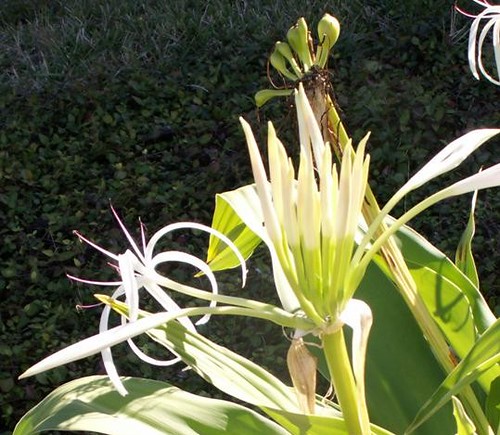
Once again I have underestimated the tropics. Our field guide says that these swamp lilies flower year-round, but less than two weeks earlier I wasn't so sure. Back then these plants had looked fairly grotesque; a month before that they were in glorious bloom. Here a single swamp lily plant bears green pods (top, slightly right of center); long narrow buds about to open; and open flowers.
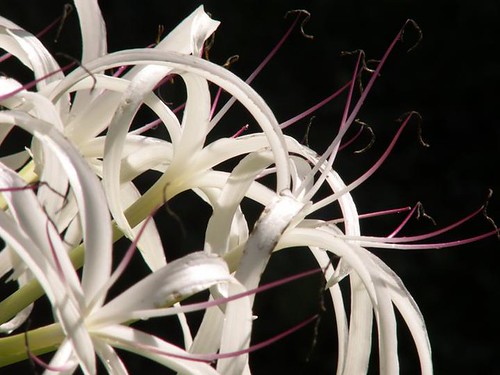
Meanwhile, I've been keeping an eye on our outside front faucet, thinking that maybe the black widow family camped out there will disperse before we get any pipe-threatening freeze:
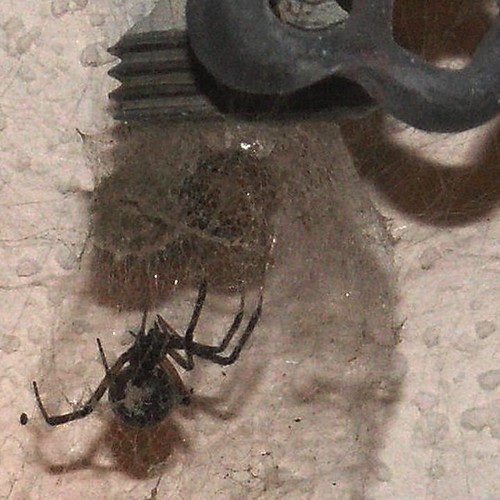
We don't mind having them around the house because we view spiders as organic pest control. Says the Audubon Society Field Guide to North American Insects and Spiders, "Despite its reputation, this spider often attempts to escape rather than bite, unless it is guarding an egg mass."
And this one is! Back in October I spotted egg cases inside a web that seemed to flow like water from the faucet. This time they are clearly being guarded by Mama.
A few days ago I was wrapping our outdoor faucets to protect them from frost and saw them. I shone a light on the family grouping and then used flash to get the shot, but if we dip toward a hard freeze I'll have to go out there and evict them.
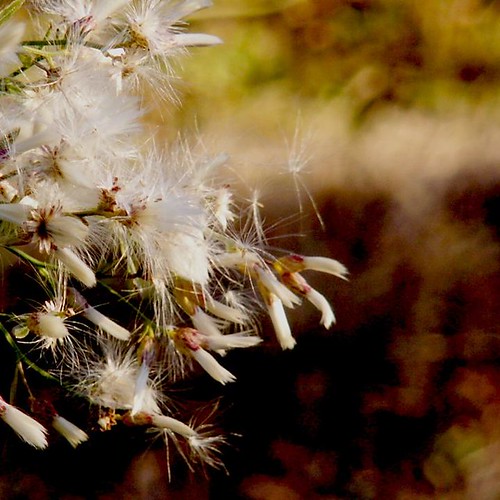
Out back our saltbushes are spreading seed on the wind; white puffs float away whenever we get a breeze. The seed above and to the right of center looks about ready to detach.
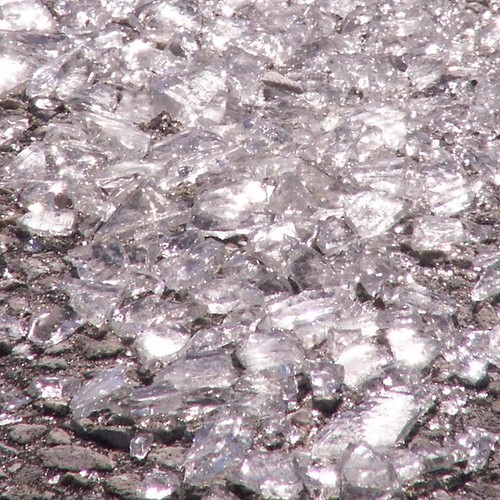
When we moved down here I left behind an unfinished piece of artwork that our friend D took and hung on the studio wall at Humphreys Street. It incorporated our landfolks' laundry lint that I'd tinted to look like clouds on blue-painted wood; and broken safety glass from the time vandals had gone up and down our block, smashing car windows. Our landfolks' hatchback had been one victim; Mary's Ranger had been another. I'd collected the glass from the Ranger. I attached it to the wood with diluted gloss medium, enough to hold the glass pieces in place without the adhesive showing.
I don't have a picture of it, because it was unfinished, but I thought of it when I saw this broken glass at the side of the road. A wide shot is here.
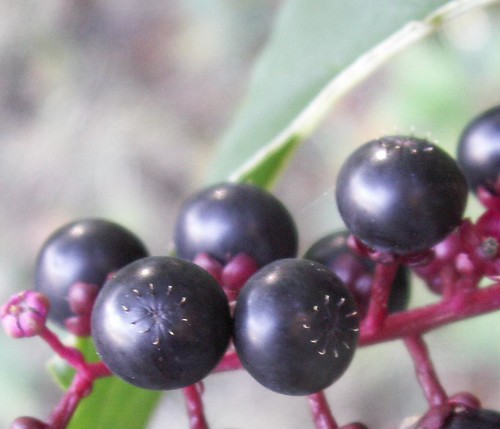
Each of these berries is about a centimeter across; they grow in a wild patch beside a library parking lot. I hadn't seen their "sunburst navels" until the day I took the shot. Not far off was some natural macrame:
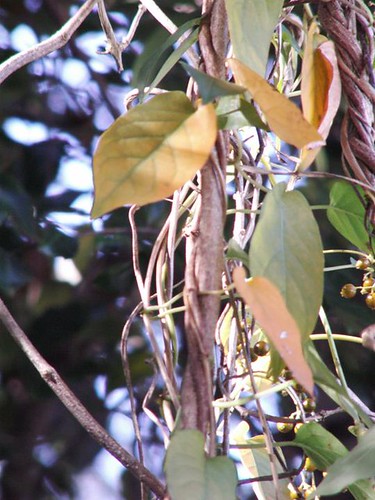
And Red has been in kitty heaven ever since my shower yesterday morning. He adores Maja soap. He'd lick the bar if we let him, which we haven't ever since we caught him in the act. But whenever we open a new one, he gets the wrapper.
Sheer bliss.
Yesterday I started a new bar when I took my shower. When I set up the tripod I was wrapped in a large blue bath towel and dripping. Pretty soon I had dispensed with the towel, giving a whole new meaning to the words "nude photography."












1 Comments:
So witchy!
Post a Comment
<< Home